The results were immediately surprising as researchers detected overwhelmingly satisfying scents with notes that were "woody," "spicy," and "sweet" in ways that were comparable to smoke, flowers, incense, and tea.
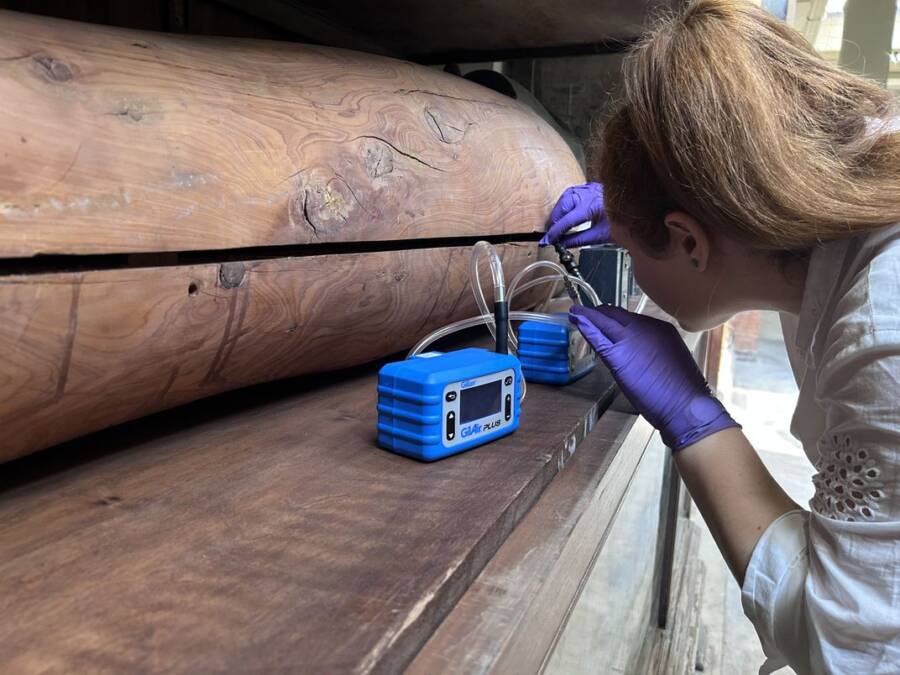
Abdelrazek ElnaggarResearcher Emma Paolin setting up tubes for air sampling in order to capture the aromas of ancient Egyptian mummies.
Dead bodies aren’t typically known for smelling good, but according to a new study, the carefully embalmed bodies of ancient Egyptian mummies are an exception.
The study, published in the Journal of the American Chemical Society, marked the first systematic odor and chemical analysis of multiple Egyptian mummies from a range of time periods. So, what do ancient Egyptian mummies smell like? Researchers detected woody, spicy, and herbal notes from the nine mummies they analyzed, as well as some hints of smoke, mold, flowers, tea, and dust.
Using these findings, they are now working to recreate a composition of the smells, allowing visitors at the Egyptian Museum in Cairo to get a whiff of the mummies’ scents. In theory, this should also help researchers and museum curators be able to tell when mummified bodies are beginning to rot.
The Surprisingly Pleasant Scents Of Ancient Egyptian Mummies
The idea came to lead researcher Matija Strlič, a chemist at the University of Ljubljana, while touring a conservation laboratory a few years ago. As he tells Smithsonian Magazine, a mummy had recently arrived at the lab from an excavation and smelled surprisingly pleasant.
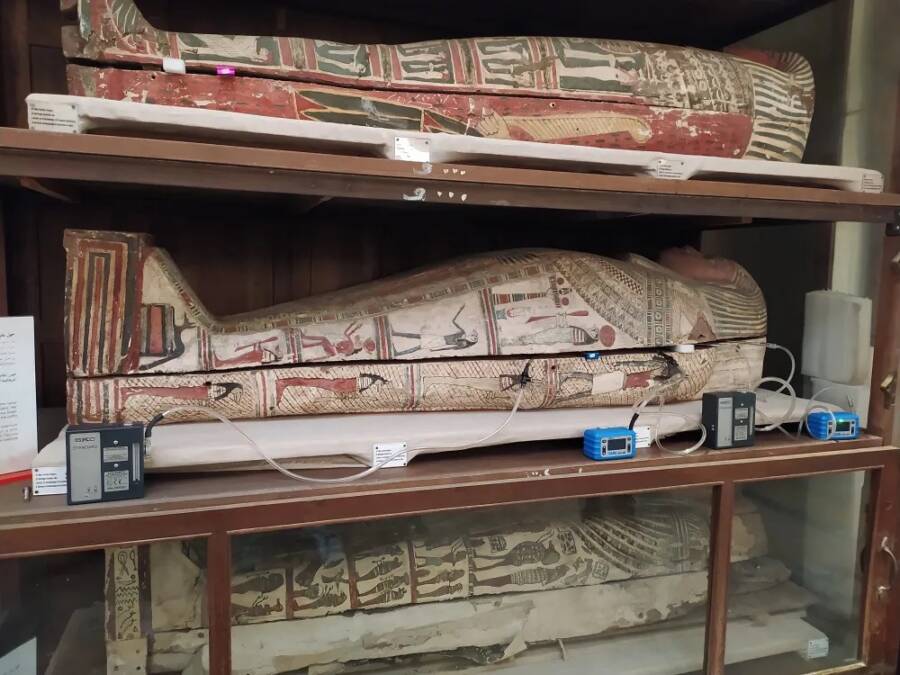
Emma PaolinScientists examined nine Egyptian mummies, then catalogued the dozens of scents they sampled.
“It had almost a cosmetic smell — pleasantly sweet and herbal,” he says. “I had heard anecdotes from conservators who said that many mummies smell pleasant and sweet, if they are in a good state of conservation, or rancid, if they are deteriorating. But this was the first time I experienced it myself.”
Despite being nearly 5,000 years old in some cases, researchers were surprised to find that the mummies still smelled of the oils, waxes, and balms that had been applied to them during the mummification process.
“In films and books, terrible things happen to those who smell mummified bodies,” Cecilia Bembibre, one of the researchers on the study, told the BBC. “We were surprised at the pleasantness of them.”
How The Ancient Egyptian Embalming Process Imbued Corpses With Certain Scents
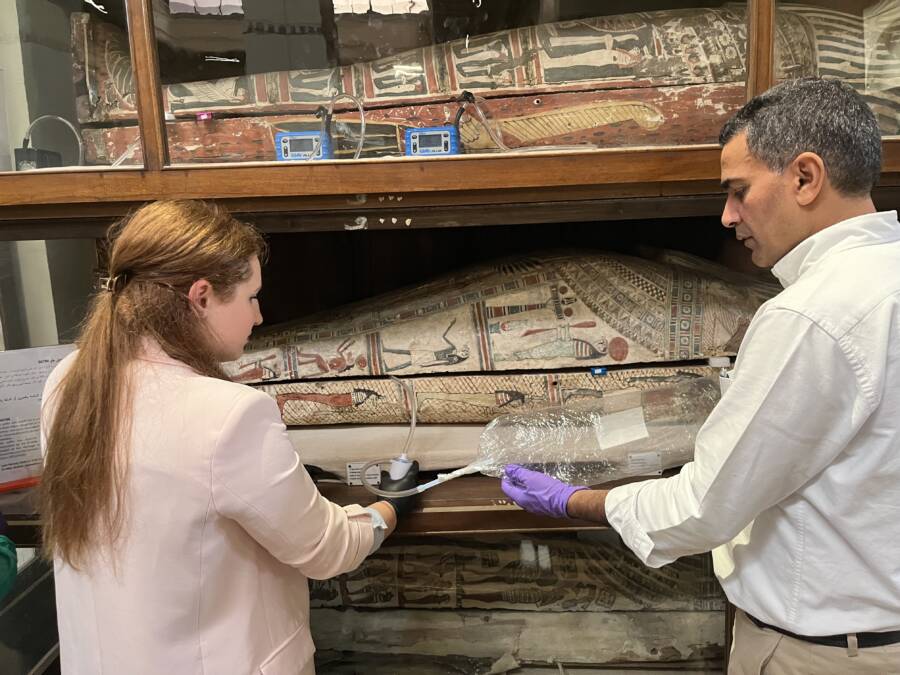
Cecilia BembibreEmma Paolin (left) and Abdelrazek Elnaggar (right) taking a sample of the scents from one sarcophagus.
Ancient Egyptian mummification was a meticulous process aimed at preserving the body for the afterlife, typically spanning about 70 days and involving several detailed steps.
Initially, embalmers would remove the brain, often through the nostrils using specialized hooks. Following this, a cut was made on the left side of the abdomen to extract internal organs like the lungs, stomach, liver, and intestines. These organs were individually treated, dried, and placed into canopic jars, each overseen by one of the four sons of Horus, deities believed to protect the organs.
The heart, which was considered the seat of intelligence and emotion, was typically left inside the body to be weighed in the afterlife.
To prevent decay, the body was dehydrated using natron, a natural salt, effectively removing all moisture.
After dehydration, embalmers cleansed the body with wine and spices to purify it. The body was then anointed with oils and resins, which served both to maintain skin elasticity and to imbue the body with a pleasant fragrance, as the ancient Egyptians believed that sweet scents were associated with purity and divinity.
The specific oils and resins used were often imported and held significant value. These included things like frankincense, myrrh, cedar oil, and juniper resin.
How Scientists Captured These Scents And What Their Research Could Mean
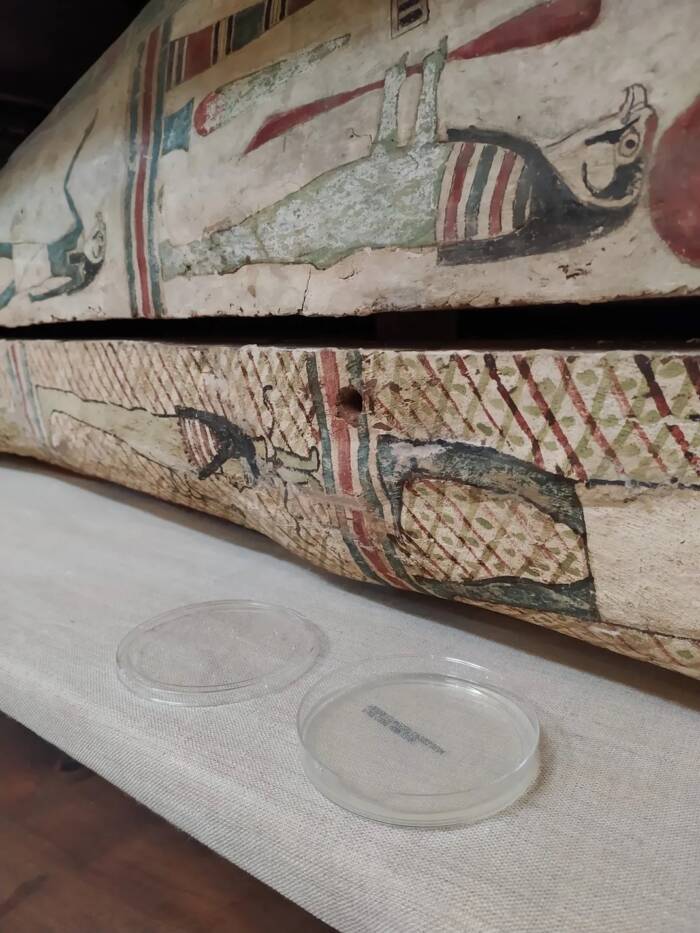
Emma PaolinResearchers use a sedimentation method to capture samples of the microbial air around the sarcophagi.
To capture and analyze these scents more thoroughly, researchers emulated a technique commonly used by perfumers to collect the aroma of rare flowers in the wild, a technique that is, notably, “non-destructive.” They used a small mold to gently vacuum the scent into a cartridge, which contained a polymer material to trap odor molecules.
Though they initially planned only to capture odors from mummy display cases, curators at the Cairo museum permitted them to take scent samples from the sarcophagi directly, enabling them to draw more in-depth comparisons between the scents. What they found was that, depending on the era and specific recipe used by embalmers, the scents were shockingly varied.
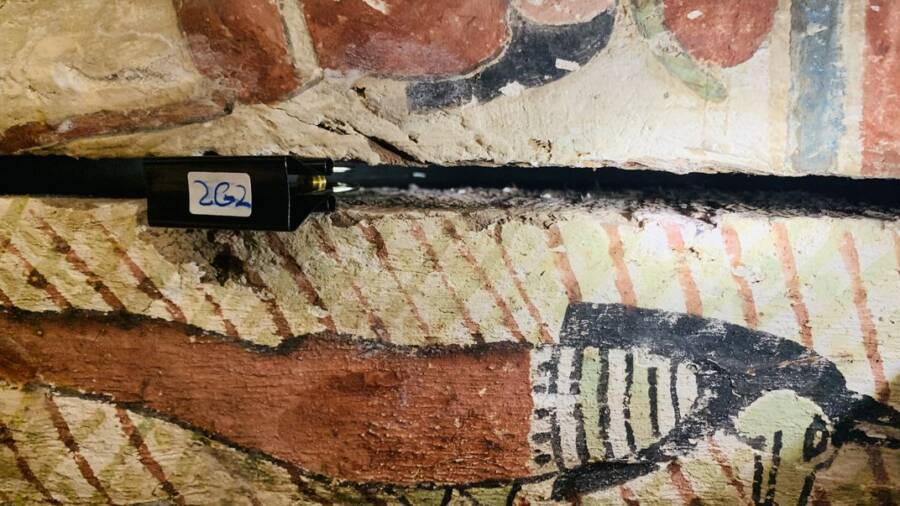
Emma PaolinPassive sampling of the air within a sarcophagus using a solid phase microextraction fiber.
Unfortunately, this also made it difficult for the team to pinpoint the original sources for many of the scents. The presence of a compound called nonanal, for example, which smells like a mix of wax and orange peel, could have been the result of the original mummification process or a product of biodegradation.
Still, the research proved that this process could be effective for the conservation of mummies, allowing scientists to “practically intervene” and identify the best methods for storing and wrapping the bodies. And for the public, it offers a unique opportunity to explore history through smell.
“Odors are a valuable part of cultural heritage,” Strlič says. “We want to be able to communicate the experience of those odors to the public.”
After reading about this research regarding the scents of Egyptian mummies, learn all about nine of the world’s most famous mummies. Then, for more ancient Egyptian history, read about how the pyramids were built.





